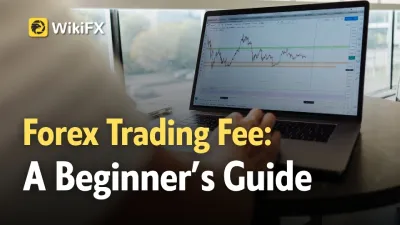How to Use Retracement in Trading
Abstract:Understanding retracement is essential for strategic trading. In today’s article, we will focus on the retracement is a temporary, short-lived pullback in the price of a financial instrument, like a stock or an index, that occurs within a larger, established trend. Think of it as a brief pause or a correction before the market continues its original movement. Unlike a trend reversal, which signals a fundamental shift in direction, a retracement represents a temporary deviation that doesn't jeopardize the long-term trend.

Understanding retracement is essential for strategic trading. In todays article, we will focus on the retracement is a temporary, short-lived pullback in the price of a financial instrument, like a stock or an index, that occurs within a larger, established trend. Think of it as a brief pause or a correction before the market continues its original movement. Unlike a trend reversal, which signals a fundamental shift in direction, a retracement represents a temporary deviation that doesn't jeopardize the long-term trend.
Key Characteristics of Retracements
The temporary nature of retracements is their defining feature. They are short-lived price reversals that have a limited impact on the broader market trend. Their primary characteristic is their inability to alter the long-term trend. For example, in a strong uptrend, periodic downward corrections or retracements may occur, but they don't disrupt the overall upward trajectory. Recognizing this distinction is crucial for traders.
Strategies for Trading Retracements
Trading retracements requires a nuanced approach, combining a comprehensive understanding of technical analysis with the application of various indicators.
Identifying Retracements as Corrections
The primary rule is to recognize retracements as corrections within the primary trend. This understanding is crucial for distinguishing between temporary deviations and true trend-reversing movements. Traders often use tools like Fibonacci retracement levels to pinpoint potential areas where a pullback might end and the original trend might resume. These levels act as potential support and resistance zones.
Using Confluence
Effective retracement trading involves confluence, which is the use of multiple indicators to confirm a trading signal. Retracements should not be traded in isolation. Traders often look for retracements to occur at key technical levels, such as:
- Moving averages: A retracement might pull back to a significant moving average (e.g., the 50-day or 200-day simple moving average).
- Trendlines: The price might retest a long-term trendline before bouncing off it.
- Fibonacci levels: The most common retracement levels are 38.2%, 50%, and 61.8%. A price pullback to one of these levels can signal a high-probability entry point.
By combining these indicators, traders can increase the likelihood of a successful trade entry. For example, a trader might look for a stock in an uptrend that retraces to its 50-day moving average, which also aligns with the 61.8% Fibonacci retracement level. This confluence of signals provides a stronger basis for a strategic long entry.

Read more

What Is Indices in Forex? A Beginner’s Guide to Trading Forex Indices
Understand what indices in forex are, how DXY works, key differences vs pairs, pros/cons, and where to trade CFDs—beginner-friendly, expert-backed guide.

Understanding Forex Spread Cost and How to Minimize It
Find the best forex spread calculators to help you accurately calculate spread costs and reduce trading fees. Maximize your forex profits today!

What Is Forex Trading Fee? A Beginner’s Guide
Understand forex broker fees and trading costs in detail. Explore fee comparisons, learn to reduce expenses, and maximize your profitability with practical forex trading tips.

Understanding UAE’s Financial Market Regulation: SCA and DFSA
Learn how the SCA and DFSA oversee financial services in the UAE, and explore official lists of licensed institutions for a secure and transparent market.
WikiFX Broker
Latest News
Join WikiFX’s Agent Growth Event | Turn Your Success into a Global Achievement
Do Kwon Faces 130-Year Prison Sentence After Guilty Plea in $40B Crypto Collapse
Best 5 Low-Spread FX Brokers in India 2025
SEC Settles California Trader with Over $234,000 Spoofing Scheme
Major Pairs in Forex: Top Traded Currency Insights
Forex Trends Explained for Your Successful Trading Experience
What is ECN in Trading? A Simple Guide
Scam Alert: Know the Risky Side of InstaForex in India
Going to Invest in FXCL? Move Back to Avoid Scams & Losses
What Is Forex Trading Fee? A Beginner’s Guide
Rate Calc

